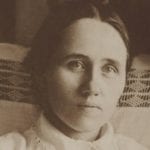 Politics
Politics  Politics
Politics  Weird Stuff
Weird Stuff Ten Bizarre Facts About The Doge Meme
 Our World
Our World 10 Ways Your Christmas Tree Is More Lit Than You Think
 Movies and TV
Movies and TV The 10 Coolest Stars to Set Sail on The Love Boat
 History
History 10 Things You Didn’t Know About the American National Anthem
 Technology
Technology Top 10 Everyday Tech Buzzwords That Hide a Darker Past
 Humans
Humans 10 Everyday Human Behaviors That Are Actually Survival Instincts
 Animals
Animals 10 Animals That Humiliated and Harmed Historical Leaders
 History
History 10 Most Influential Protests in Modern History
 Creepy
Creepy 10 More Representations of Death from Myth, Legend, and Folktale
 Politics
Politics 10 Political Scandals That Sent Crowds Into the Streets
 Weird Stuff
Weird Stuff Ten Bizarre Facts About The Doge Meme
 Our World
Our World 10 Ways Your Christmas Tree Is More Lit Than You Think
Who's Behind Listverse?

Jamie Frater
Head Editor
Jamie founded Listverse due to an insatiable desire to share fascinating, obscure, and bizarre facts. He has been a guest speaker on numerous national radio and television stations and is a five time published author.
More About Us Movies and TV
Movies and TV The 10 Coolest Stars to Set Sail on The Love Boat
 History
History 10 Things You Didn’t Know About the American National Anthem
 Technology
Technology Top 10 Everyday Tech Buzzwords That Hide a Darker Past
 Humans
Humans 10 Everyday Human Behaviors That Are Actually Survival Instincts
 Animals
Animals 10 Animals That Humiliated and Harmed Historical Leaders
 History
History 10 Most Influential Protests in Modern History
 Creepy
Creepy 10 More Representations of Death from Myth, Legend, and Folktale
10 Truly Dark Moments From The Roaring Twenties
The 1920s, aka the Roaring Twenties, were a fascinating time in US history. People were becoming more affluent, opening doors to new opportunities and experiences. Time-saving inventions also opened up free time for fun and entertainment. Radio was a favorite new pastime. People flocked to theaters to see silent movies, and toward the end of the decade, filmmakers were starting to introduce the “talkies.”
Women worked outside the home and could finally vote. The availability of birth control devices gave women freedoms that previous generations could never have imagined. Young women bobbed their hair short, wore short skirts, smoked, drank, and generally were not as “ladylike” as their prim and proper ancestors had been. Cars had also become affordable to many people. With all this newfound freedom and extra money to spend, young people wanted to go out, have fun, and dance. Jazz bands played at dance halls and at local radio stations. The music was so popular that 100 million phonograph records sold in 1927 alone.
Things were exciting and fun in the Roaring Twenties, but where there is good, ultimately, there is also bad. Prohibition, murders, lawlessness, organized crime, nativism, the revival of the Ku Klux Klan, and a deep division between people took some of the shine off of this decade.[1] Let’s take a look back at some of the people and events that contributed to the flip side of the 1920s.
10 Nathan Leopold And Richard Loeb
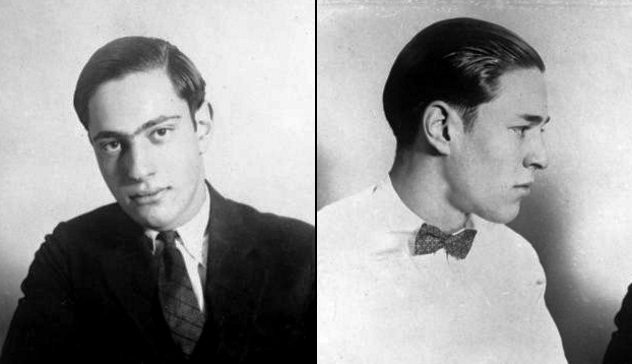
Nathan Leopold and Richard Loeb were two young men from extremely wealthy, prestigious families. Leopold’s father made his fortune in the shipping industry, and Loeb’s father was vice president of Sears, Roebuck & Company. Each were considered to be intellectual prodigies, and they met when they each skipped several grades in order to attend the University of Chicago, at the ages of 14 and 15. In college, the two became inseparable, and eventually, a sexual relationship developed.
Loeb fantasized about being a master criminal and was exhilarated by committing burglaries, setting fires, stealing cars, and vandalizing storefronts. He was thrilled to have a “partner in crime” and would sometimes entice Leopold to accompany him during these crimes with the promise of sexual favors. When these lesser crimes didn’t make the headlines that they craved, the pair became obsessed with committing the perfect crime. To their way of thinking, the most shocking thing that they could do would be to kidnap and murder a child.
In May 1924, the duo rented a car, obscured the license plate, and set out to find their victim. As they were about to stop looking for the day, they spotted Loeb’s 14-year-old cousin, Bobby, walking home. After luring Bobby into their vehicle with the promise of a ride home, they began attacking him with a chisel that had been taped up in order to use it as a club. They struck him repeatedly in the head and then stuffed a rag down his throat and taped his mouth shut. They disposed of Bobby’s body in a culvert and then mailed a ransom note requesting $10,000 from his family. Unfortunately for them, the body was discovered before the ransom note could be received and paid.
Alas, the “perfect crime” was not to be. A pair of glasses were found near the body and were traced back to Leopold. The duo were questioned, and both confessed to the murder. Famous criminal defense attorney Clarence Darrow represented them at trial. It was considered a small victory that they were spared a death sentence. Both received life plus 99 years in prison. Loeb was stabbed to death in the shower room while incarcerated, and Leopold was eventually paroled and moved to Puerto Rico to live out his days.
During the trial, Leopold made the following statement: “A thirst for knowledge is highly commendable, no matter what extreme pain, or injury it may inflict upon others.”[2]
9 Nicola Sacco And Bartolomeo Vanzetti
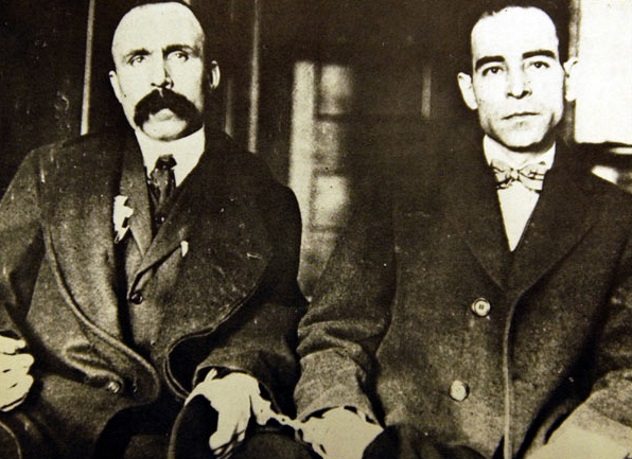
Imagine a Massachusetts courtroom in 1921 filled with spectators. In the center of that room is a metal cage with bars. Inside that cage sit two Italian immigrant defendants who have been charged with murder. This was done to protect “respectable American Society” from these heinous murderers. Most would agree that it would be rather difficult to receive a fair and impartial trial when being displayed as caged animals.
Nicola Sacco and Bartolomeo Vanzetti were charged with the 1920 murders of the paymaster of a shoe factory and a guard who was accompanying him to secure the payroll. Although the evidence was extremely circumstantial, they were arrested and found guilty of both murders. Sacco was said to have pointed at the jury after the verdict was read and cried out, “You kill two innocent men. We are innocent.” He repeated this over and over again as they were led out.
Opinion was divided, but it was believed by many that they were convicted not for their actual guilt but because of their radical anarchist beliefs, a prejudiced legal system, and a trial that was dreadfully mishandled.
In 1925, another man confessed that he and his gang actually were the ones who committed the murders. The Supreme Court refused to overrule the verdict, and the two men were sentenced to death. The US and the world had been anxiously following the trial. Riots ensued in Paris and London, and bombs were set off in New York City and Philadelphia to protest the verdict and execution that took place in 1927.[3]
8 Ruth Snyder And Henry Gray
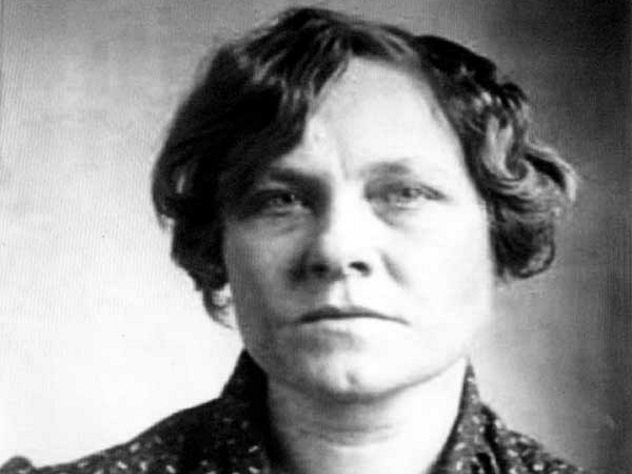
Her eye ruled me. I tried to look away. I couldn’t. I was helpless to resist anything she bade me do. –Henry “Judd” Gray.
Ruth married Albert Snyder in 1915. Over the years, he was known to be an abusive husband and a heavy drinker. In 1925, Ruth met a traveling salesman by the name of Henry “Judd” Gray. Despite the fact that they were both married, they immersed themselves into a long-term affair.
In 1927, Ruth purchased a double indemnity life insurance policy on her husband Albert, without his knowledge. This policy would pay double if he was to die by “misadventure.” With the prospect of cashing in on this policy, Ruth and Judd began to plan the murder.
The time came to carry out the killing on March 20, 1927. They made sure that Albert was drunk and knocked him unconscious with a weight. They then proceeded to smother him with chloroform-soaked cloths and used picture wire to strangle him. After they finished him off, they staged a burglary and disposed of their bloody clothing in the basement furnace.
Ruth’s daughter later found her “unconscious” mother with her feet bound, but her hands were curiously free. The doctor found no evidence to suggest any blow to the head, and the jewelry that she reported as stolen was soon found under a mattress by the police. As their story unraveled, Ruth and Judd both ended up confessing to the crime. She tried to pin it on him, and he tried to pin it on her, but they were ultimately tried together and found guilty. They were executed just minutes apart in 1928 at Sing Sing Prison in New York. The New York Daily News published one of the most controversial photos ever of Ruth, while she was dying in the electric chair.
The case sparked a media frenzy due to the fact that one of the defendants was a woman. At that time, there had been very few cases of a female committing such a crime. She was made out to be a promiscuous, coldhearted, “non-female” monster in the news and was called a devouring “serpent” by the prosecutor. They portrayed her as a woman with a huge appetite for sex, drinking, smoking, and dancing.[4]
7 Hall-Mills Case
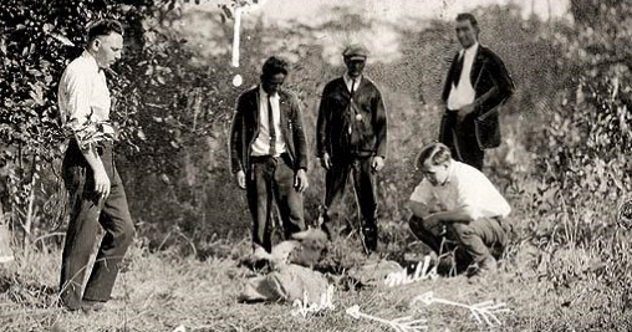
It’s September 16, 1922, and a young couple are walking through a park in New Brunswick, New Jersey. They spot another couple lying on their backs under a crab apple tree as if they were enjoying the nice day. His hand rests gently under her neck, and her hand is laid lovingly on his knee. A hat covers his face, as if to block out the sun, and the woman has a scarf wrapped around her neck, perhaps to ward off the chill. At first glance, it appears that the young couple walking by this scene are just witnessing an ordinary day. On second glance, they would soon find that it was horrifyingly different than what it first appeared.
Under the hat, the man had been shot once in the head. Under the scarf, the woman’s throat had been slashed from ear to ear, and the wound was filled with maggots. She had also been shot in the head three times. Love notes were scattered on the ground between them, and a calling card with the name Reverend Edward W. Hall inscribed on it was found propped against the man’s shoe. Some reports, whether true or not, stated that the woman’s tongue had been removed.
The man would be identified as the Reverend Edward Wheeler Hall, who was the pastor of the local Episcopal church. The woman was identified as Mrs. Eleanor Mills, who sang in the church’s choir. Reverend Hall was married to Frances Stevens, who was related to the founders of Johnson & Johnson. Mrs. Mills was married to James Mills, who served as the sexton at the church. Gossip had long linked the reverend and the choir singer as a couple, even though both spouses claimed to know nothing about it, which is curious when you consider statements that were made during the following conversation:
Mrs. Hall said to Mr. Mills, “Mr. Hall did not come home last night.” “Do you think they eloped?” asked Mr. Mills, to which Mrs. Hall proclaimed, “God knows, I think they are dead and can’t come home.”
The investigation was terribly botched, and no one was officially charged until four years later, when the New York Daily Mirror published articles again about the case. The newspaper was said to have made suggestions that the reverend’s wife, brothers, and uncle were behind the crime. The authorities, stating that they had a secret witness, brought charges against them all. The witness owned a pig farm on the road where the bodies were found. Due to the nature of her business, she was dubbed “the Pig Woman” during the trial. She reportedly was dying of cancer and gave testimony from a hospital bed that had been rolled into the courtroom. She stated that she had seen all of the defendants at the scene of the crime. She wasn’t a very credible witness, and the defendants were found not guilty. The cousin, who was set to be tried separately, had his case dropped.
This case remains unsolved. A number of people thought that perhaps the Ku Klux Klan, which had been active in the area at that time, may have been responsible for what they considered the sexual immorality of the case. Others continued to believe that the wife and/or brothers were indeed the perpetrators. A dying man confessed on his deathbed that he was friends with one of Mrs. Hall’s brothers and acted as a go-between for her and two unidentified men. He claimed the wife knew of the affair and hated him for it. He reportedly received two envelopes from Mrs. Hall while she was in her car, and he gave them to two men who were waiting in the alley. He claimed that there was $6,000 in cash in each envelope.[5]
6 Virginia Rappe And Fatty Arbuckle
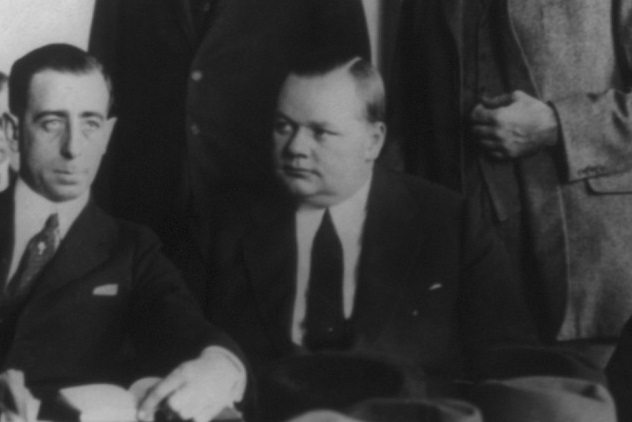
What really happened in Room 1219 of the Hotel St. Francis in San Francisco? We may never know the true story of that fateful Labor Day in 1921.
Roscoe “Fatty” Arbuckle was a comedic movie superstar. He was considered second only to Charlie Chaplin and appeared in more than 150 silent films and directed at least 78. At one point, he was paid $1 million per year by Paramount. At the height of his career, he led an extravagant lifestyle with fancy cars, a mansion with staff, parties, and worldwide fame.
Descriptions of Virginia Rappe varied wildly. In some circles, she was reportedly a model, clothing designer, and film actress who loved to travel. Others said she was sleeping her way through Hollywood, had venereal diseases, and was suffering from a botched abortion.
Mr. Arbuckle, who was in need of a vacation, chose to pay a visit to San Francisco over the Labor Day weekend of 1921. He booked three connecting rooms at the Hotel St. Francis, not knowing that the weekend would turn into a nightmare that would forever change his life and leave one woman dead.
After spending Sunday dining, dancing, and visiting friends, an impromptu party materialized on Labor Day Monday. As the day went on, and more people showed up in his rooms, a phonograph was ordered from the hotel, and drinks started to flow, despite being in the midst of Prohibition. The party progressed, but then the story starts to get a bit fuzzy. At some point, Virginia Rappe is said to have ended up in Arbuckle’s room with the door locked. When that door opened, a friend of Rappe claimed that she heard her moaning and saying, “I am dying, I am dying.” Despite being examined by three doctors and three nurses and being misdiagnosed over and over again, she eventually slipped into a coma and died on September 9. The autopsy declared a ruptured bladder to be the cause of death.
Despite having no real evidence and untrustworthy witnesses changing their testimony repeatedly, Mr. Arbuckle was arrested and charged with her death. Rumor was that he raped her with a glass bottle, which ruptured her bladder. Nothing was ever proven, and some wondered if a crime had been committed at all or if it was possibly a long-term illness that Rappe finally succumbed to. Arbuckle was tried three different times on this charge. The first two ended with deadlocked juries, and the third voted to acquit him.
Even though he was acquitted, Arbuckle’s life and career were never the same. The trials cost him most of his money, and he died in 1933 from a heart attack at the age of 46.[6]
5 The Scopes Monkey Trial
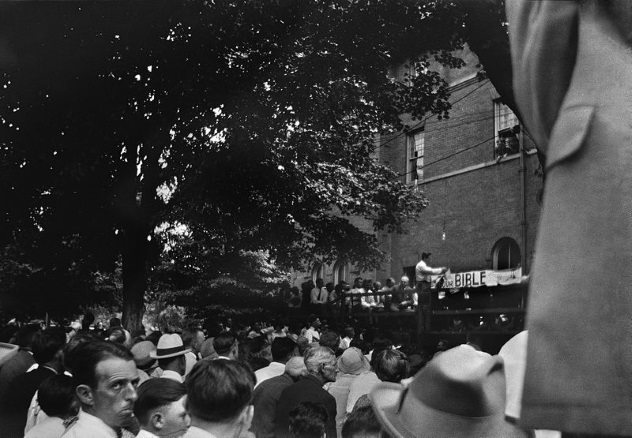
As lifestyles changed and different beliefs started to emerge in the 1920s, evangelists united to fight against what they saw as a decline in Christian morality. They targeted sexual permissiveness, racy Hollywood movies, and jazz music in their fight to preserve the authority of the Bible.
John Scopes, who was a public high school teacher in Dayton, Tennessee, started to teach evolution to his students. This was in direct violation of a law that had been recently passed in Tennessee that evolution, or any theory that contradicted the biblical creation, could not be taught in the classroom.
Scopes was defended by famous attorney Clarence Darrow, who was himself agnostic. They also had the support of the American Civil Liberties Union. William Jennings Bryan prosecuted the case. He was a Christian who had at one time been a presidential candidate. He held the belief that the Bible should be interpreted literally and that evolution was dangerous.
The trial, which became known as the Scopes Monkey Trial, took place in 1925 and was attended by hundreds. Bryan described evolution as “millions of guesses strung together” and said that it made man “indistinguishable among the mammals.” Darrow chose to try and poke holes in the biblical story of Genesis, saying that they were “fool ideas that no intelligent Christian on Earth believes.” It was basically a trial of the Bible verses Darwin.
Scopes was found guilty of violating the law and was fined $100. The law that he violated would stand for another 42 years. Even though he lost the case, Darrow considered it a small victory that he was able to publicize the scientific evidence for evolution. Due to the trial’s impact, the subject did not show back up in textbooks again until the 1960s.[7]
4 Trial Of Dr. Ossian Sweet
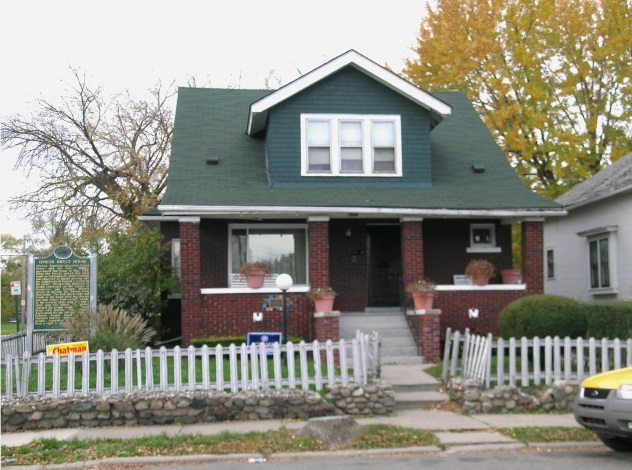
Imagine being a well-educated physician with a wife and small child to support. Imagine having the means to purchase a beautiful home for your family to grow and thrive in, with great hope for the future. Then imagine all those hopes and dreams grinding to a halt in the midst of racism and adversity. Dr. Ossian Sweet faced this.
Dr. Sweet knew of the troubles that other African Americans had faced when trying to buy homes in what were considered “white neighborhoods” in the 1920s. A banker and a congressman in Chicago both had their homes bombed a number of times. Other families were forced to abandon their houses by crowds terrorizing them with guns and clubs. Some even had their homes pulled down on top of them while still inside. Dr. Sweet hoped that since he was a physician, he and his family would not have to endure the same acts of violence. Unfortunately, he was wrong.
Upon purchasing his home (pictured above in 2008) in Detroit, Michigan, Dr. Sweet notified the local police of the date when he and his family would be moving in. That day, September 8, 1925, officers were sent to protect them but ended up being more for show than anything. Dr. Sweet also had nine friends and relatives with them that day. They were armed with guns in case any acts of violence occurred.
Upon hearing of their move, hundreds of angry rioters began to assemble at the house. On the evening of September 9, as the crowd grew more hostile, rocks were thrown, insults were screamed, and shots started to fly. Self-defense shots were fired from a second-story window of the home into the crowd. One man was injured, and another man was killed. Dr. Sweet, along with his family and friends, were arrested and tried for murder.
Clarence Darrow took on their defense. He argued in front of an all-white jury that “a man’s house is his castle and that he is duty bound to defend it.” The first trial ended in a hung jury. At the second trial, only Dr. Sweet’s brother, Henry, was charged. He was acquitted.
Shortly after the trial, Dr. Sweet’s young child and his wife both contracted tuberculosis and died from their illnesses. He resumed work within his medical practice. It is said that he lived in the home until 1944. Then, in 1960, after years of a difficult journey, Dr. Sweet committed suicide.[8]
3 Stock Market Crash Of 1929
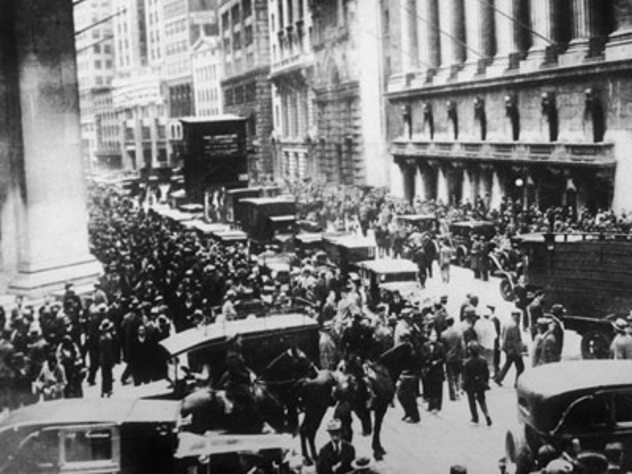
On Tuesday, October 29, 1929, over 16.4 million shares were traded on the New York Stock Exchange in a single day, causing a downward spiral that would prove to be a catalyst in sending the United States into the Great Depression. This would forever be known as Black Tuesday. The economy would not recover until 1939.
Newspapers regularly printed stories of everyday people making millions of dollars by investing in the stock market. With their confidence high, many invested their entire life savings, and others bought stocks on credit (margins). Things were going so well that companies would put money in stocks, and banks even invested their customers’ money without telling them.
But things that go up must eventually come back down. Stocks began their decline in September, and by early October, they began their fall. People started to panic, and record trades were reported on Thursday, October 24. Banks and investment companies tried their best to stabilize the market, but it wouldn’t prove to be enough to save it. By Tuesday, October 29, stock prices would completely collapse, and investors lost billions of dollars. Trading was so intense that the ticker machines couldn’t keep up and would be 2.5 hours behind by the close of the day. The stock market would close for three days afterward. Legends state that many people committed suicide that day, though actual records do not show that.
Within the first few years of the Great Depression, almost half of US banks would fail, and unemployment would reach about 30 percent.[9]
2 The Temperance Movement And Prohibition
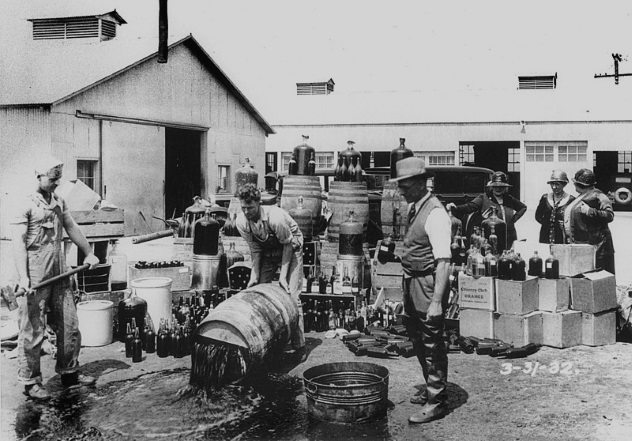
Today, many wonder how Prohibition could have possibly ever happened. To understand the thinking behind what became the 18th Amendment, you have to understand the lifestyle of Americans during the time that led up to it becoming law.
In 1830, women had very few rights legally and were for the most part completely dependent on their husbands for support. In many cases, women blamed their husbands’ alcohol consumption for abuse and the sorry state of their lives. It was reported that people over the age of 15 regularly drank about 26 liters (7 gal) of pure alcohol a year. In comparison, this would be about three times more than what Americans consume presently. Women saw drinking as a “great evil” that was to blame for a long list of problems, and it needed to be wiped out.
Protestant churches led the way in the fight by urging people to use alcohol in moderation or to resist it completely. The Women’s Christian Temperance Union was founded and became a “force to be reckoned with.” People who were leading the way in the fight for women’s right to vote supported the movement and made it stronger. When the Anti-Saloon League came into being, it gave even more strength to the movement and became the most successful single-issue lobbying organization in history. There were so many saloons at that time that there was reportedly one for every 150 to 200 citizens.
On January 17, 1920, after many years of fighting, the 18th Amendment was born, and it became illegal to manufacture, sell, or transport alcohol. Within moments of it going into effect, numerous accounts of violence and the theft of alcohol were reported. The lawmen would see that enforcing Prohibition would be extremely difficult. People didn’t appreciate the government trying to “regulate their morality,” and a new generation ignored the law altogether. Bootleggers were born, speakeasies came into existence, and gangs that trafficked alcohol became powerful.
Herbert Hoover would call Prohibition a noble experiment, and after losing the fight to enforce it, the law was repealed in the 1930s.[10]
1 Organized Crime And The Saint Valentine’s Day Massacre
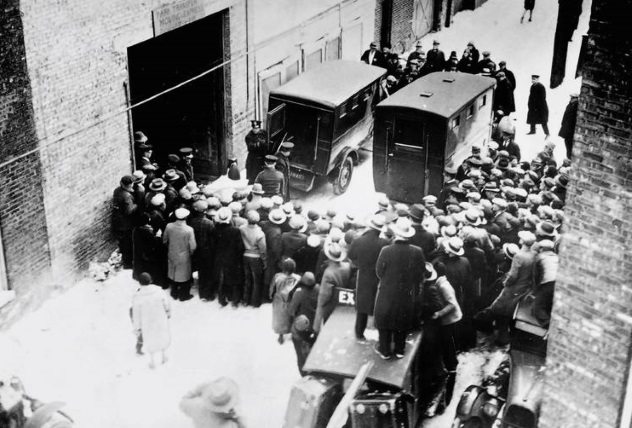
You can’t mention the 1920s and not speak of Al Capone and organized crime. The Mafia rose to power during Prohibition and became extremely skilled at money laundering, smuggling, and bribing police and other public officials to get what they wanted. They were experts at bootlegging, prostitution, gambling, and running speakeasies where people could party and drink without worry.
Chicago already had a reputation for violence and lawlessness, but when Al Capone took over from his boss in 1925, it escalated. He was determined to get rid of his rivals, and he did so at every opportunity. The bloodiest came on Valentine’s Day 1929 against his longtime enemy, George “Bugs” Moran. Men dressed as policemen entered the garage on the North Side of Chicago where Bugs ran his bootlegging business. They proceeded to line up seven of his men and had them face the wall as if they were going to arrest them. 70 rounds of ammo were fired. Six were dead and one was dying when the real police arrived on the scene. Officers tried to pry what happened out of the dying man, but he wouldn’t talk and died shortly thereafter. Moran immediately blamed Capone, but it was never linked to him.[11]
Federal authorities decided they’d had enough of Al Capone, dubbed him “Public Enemy No. 1,” and proceeded to go after him with everything they had. After serving short sentences for several lesser charges, he was finally found guilty of federal income tax evasion and was sentenced to 11 years in prison. His income had been estimated at $60 million a year, and in 1927, his net worth was estimated at $100 million. He served part of the sentence in Atlanta and the rest at the infamous Alcatraz. He was paroled in 1939 and, by all accounts, died an invalid and recluse in 1947.
Read about more fascinating periods in US history on 10 Terrifying Medical Facts Of The US Civil War and 10 Little-Known Mysteries From America’s Great Depression.



